Abstract
When a learner is taught a new response, the stimuli that influence its display are often unknown. The presence or absence of these stimuli alters the probability of occurrence of the response. By identifying the stimuli influencing the probability of newly acquired responses, interventionists may program for their generalization more effectively and efficiently. This investigation describes the application of an operant methodology to assess functional relationships between responses and specific stimulus variables. Four young adults with moderate mental retardation were taught to include "please" as part of requests they made in school. Four environmental stimuli, present during training, were assessed for the controlling properties they acquired. Each of the four was assessed prior to and after training by presenting it in isolation (i.e., the other three were varied). If the presence of a single stimulus associated with training did not occasion "please," then pairs of stimuli were probed. The results revealed that single-stimulus probing occasioned responding by only 1 learner; paired-stimulus probing set the occasion for including "please" by 2 others. Control of the 4th learner's responding was lost before training was introduced, because he began including "please" in his requests during baseline. The implications of these results are discussed in terms of analyzing stimulus control and promoting stimulus generalization.
Full text
PDF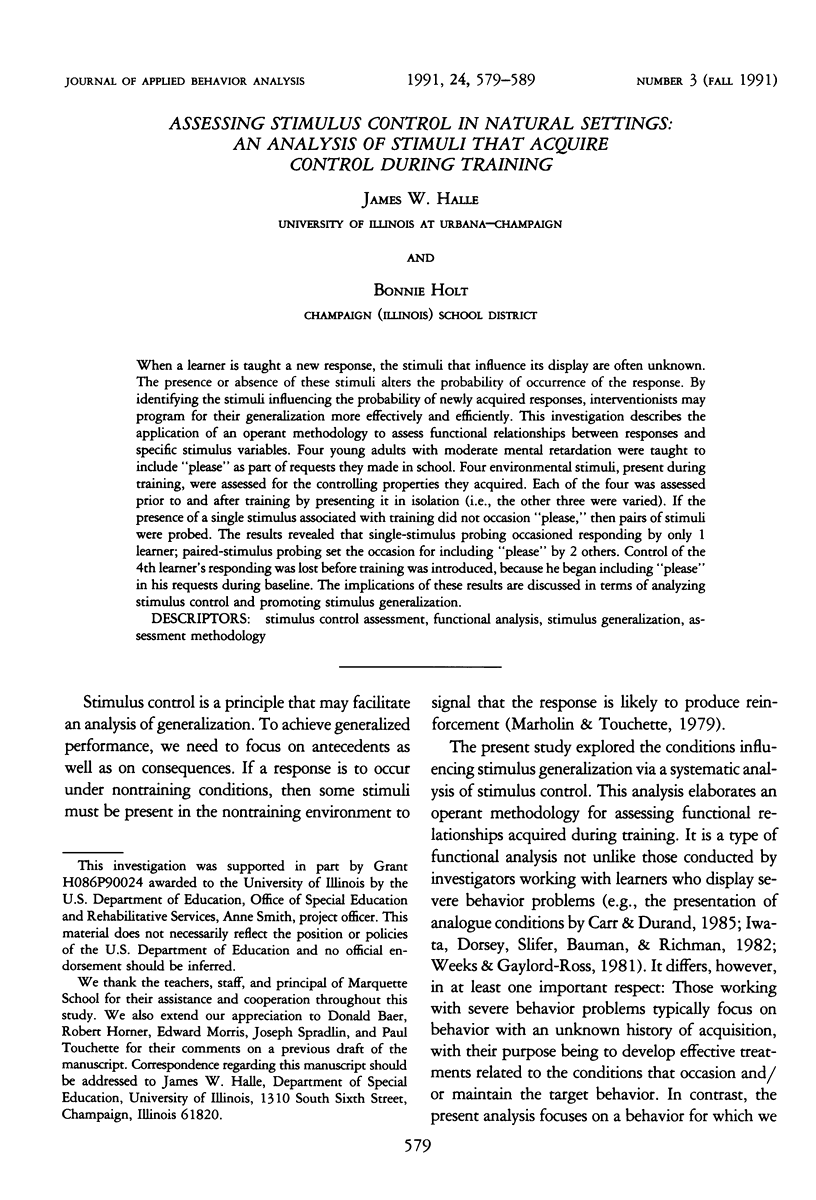
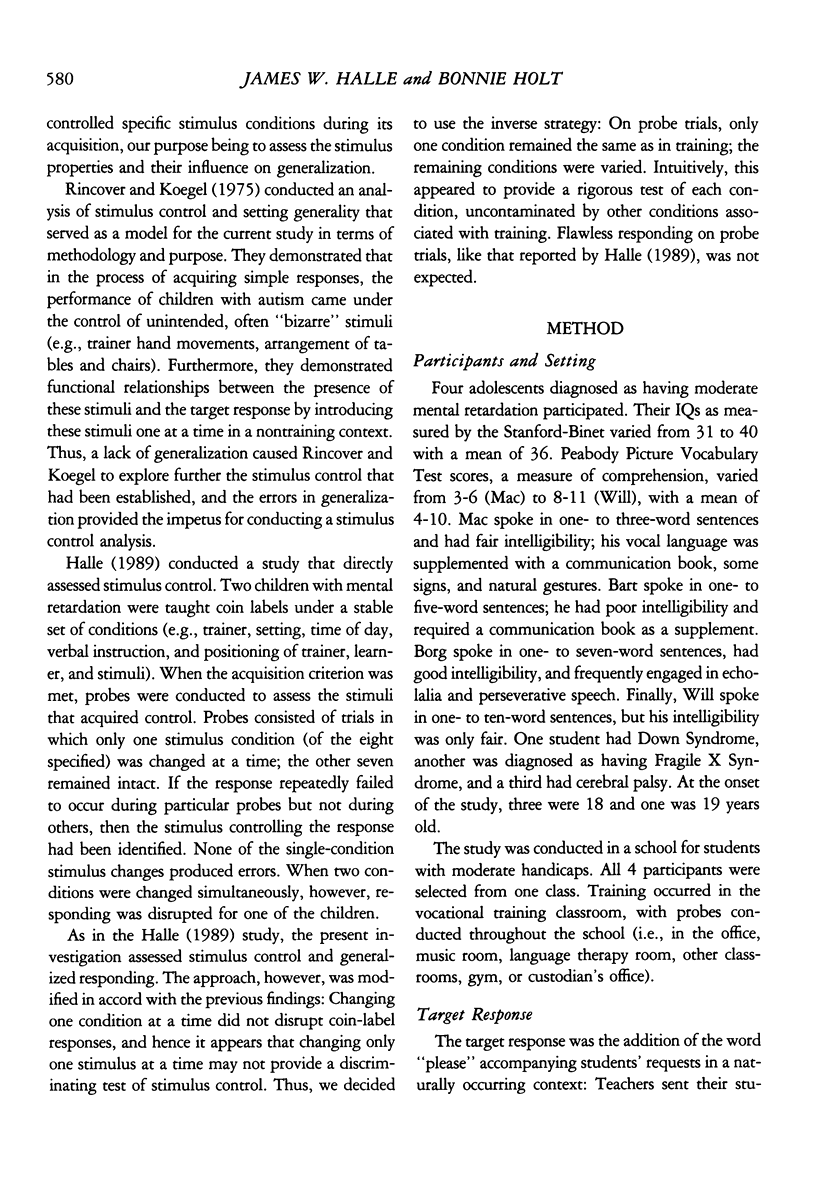
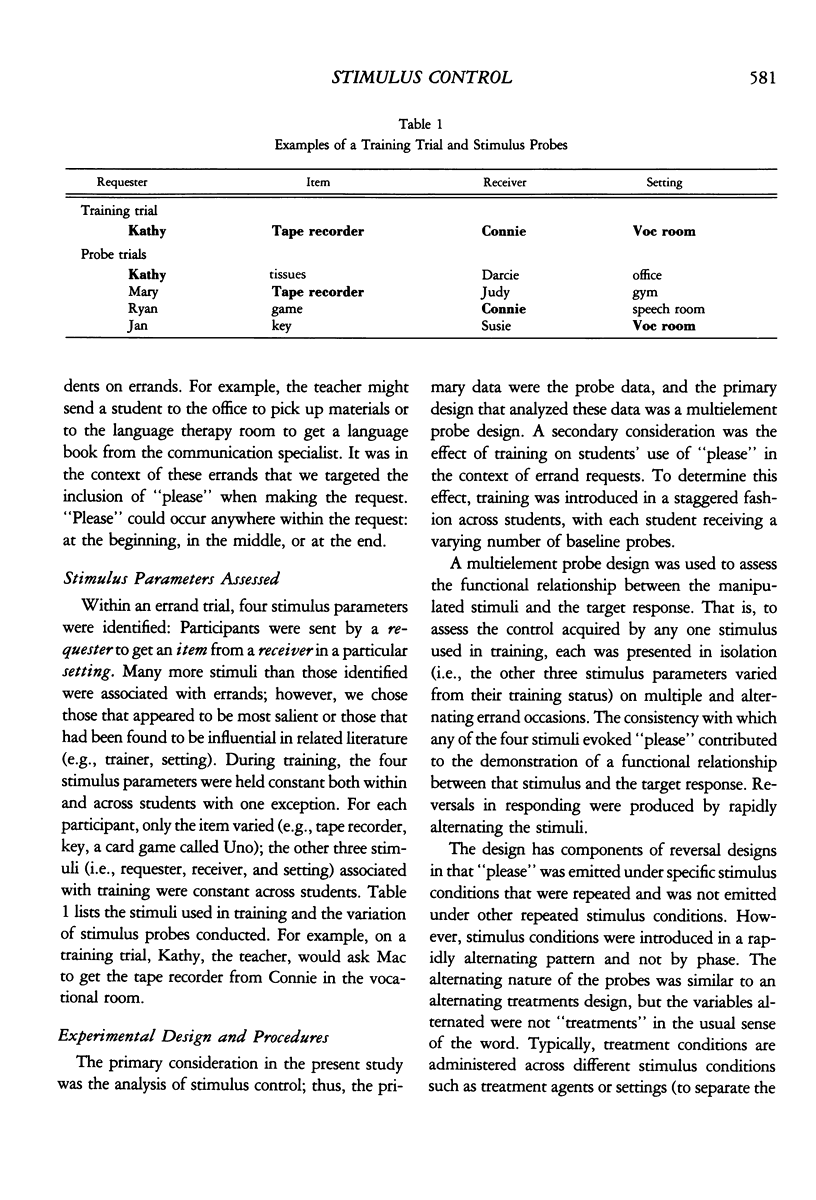
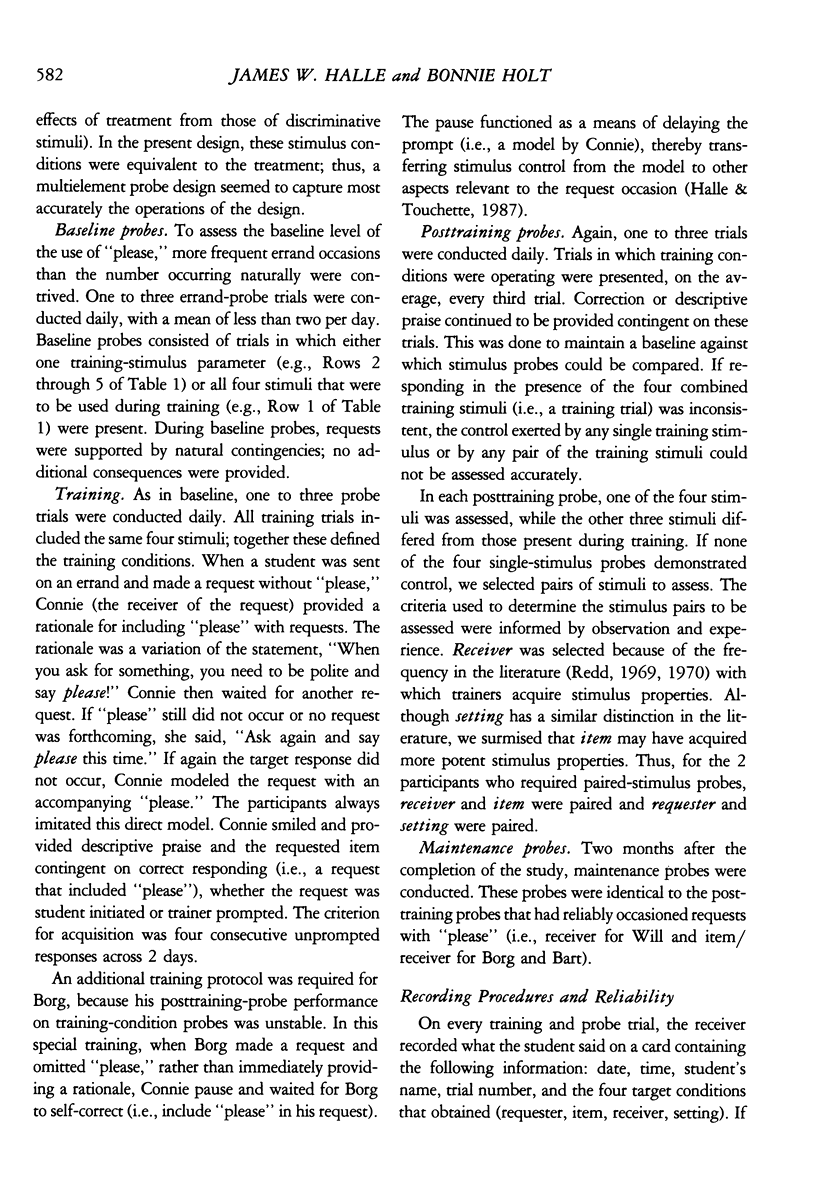
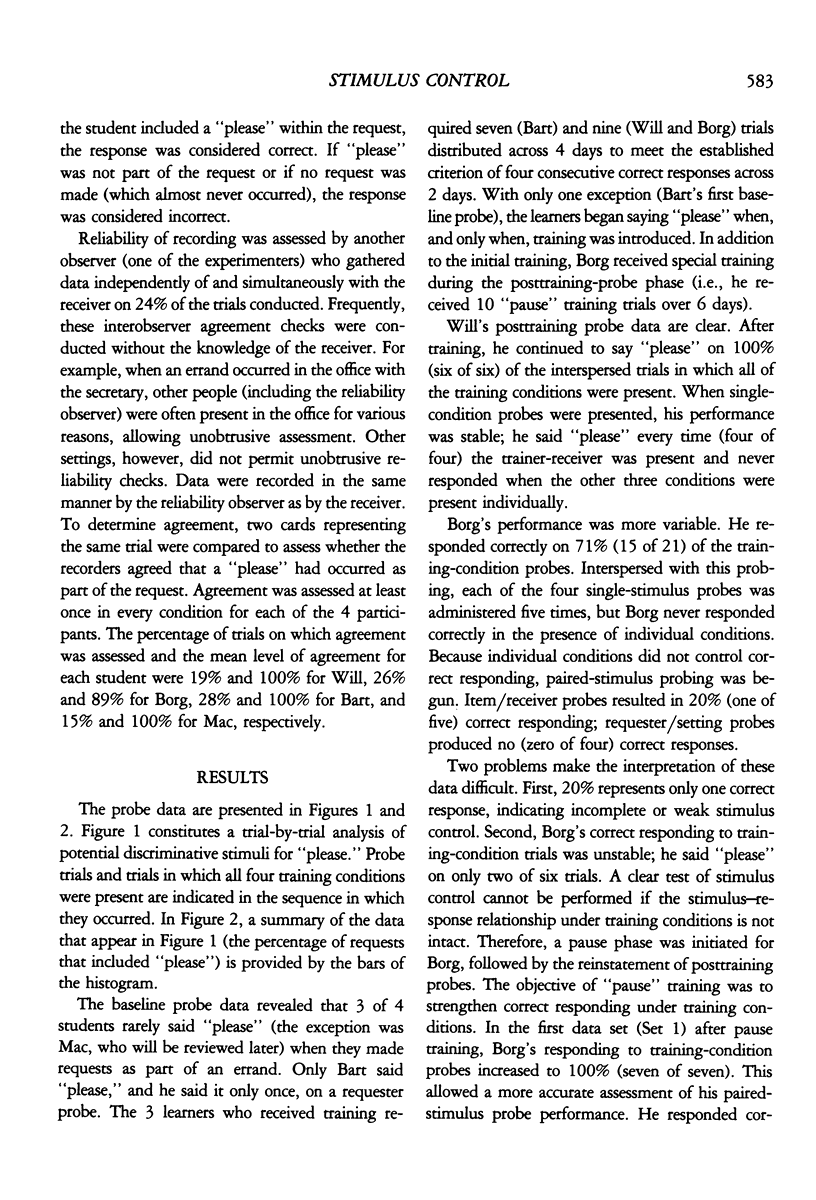
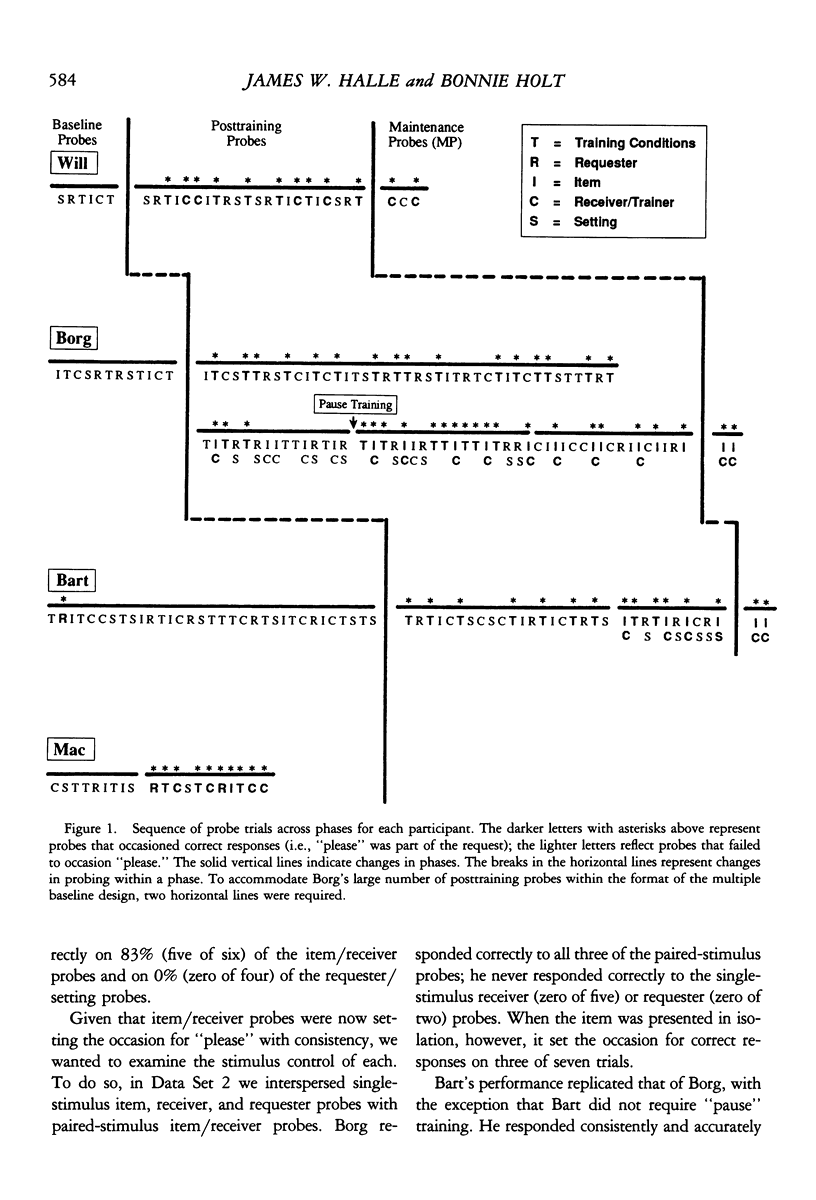
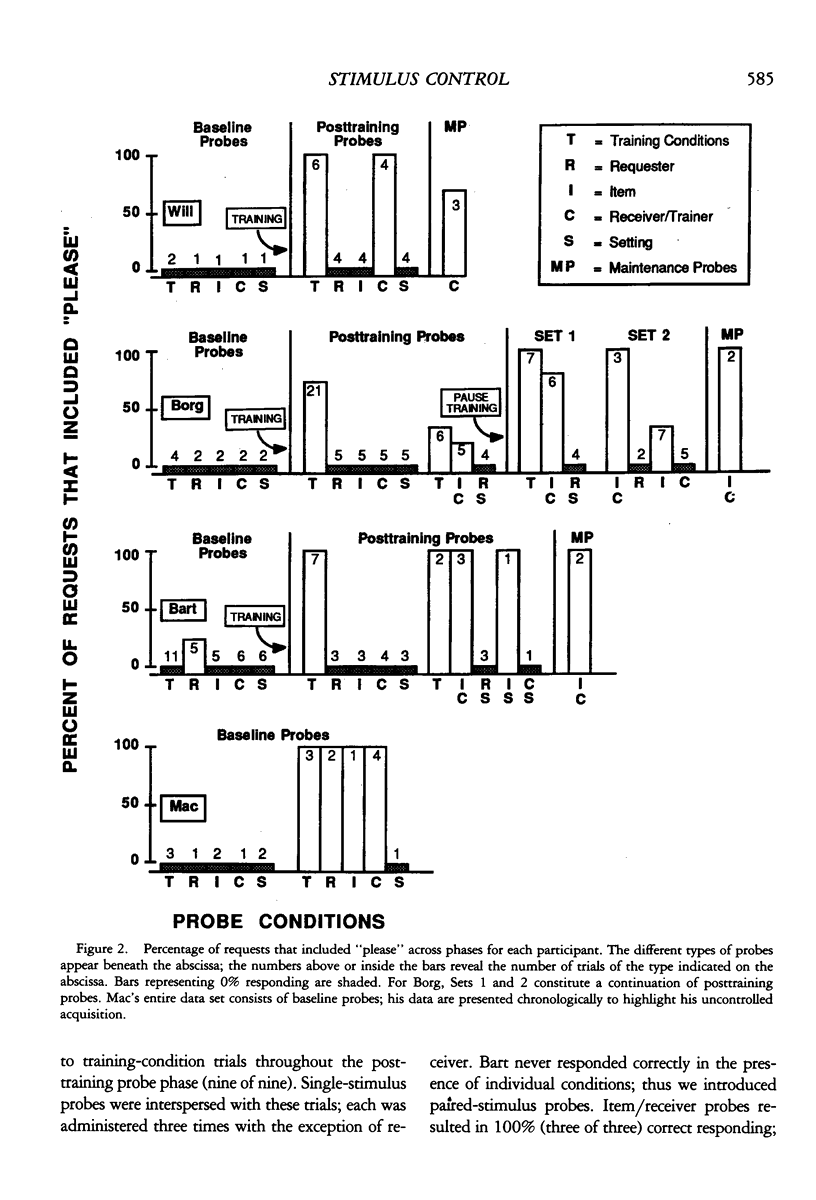
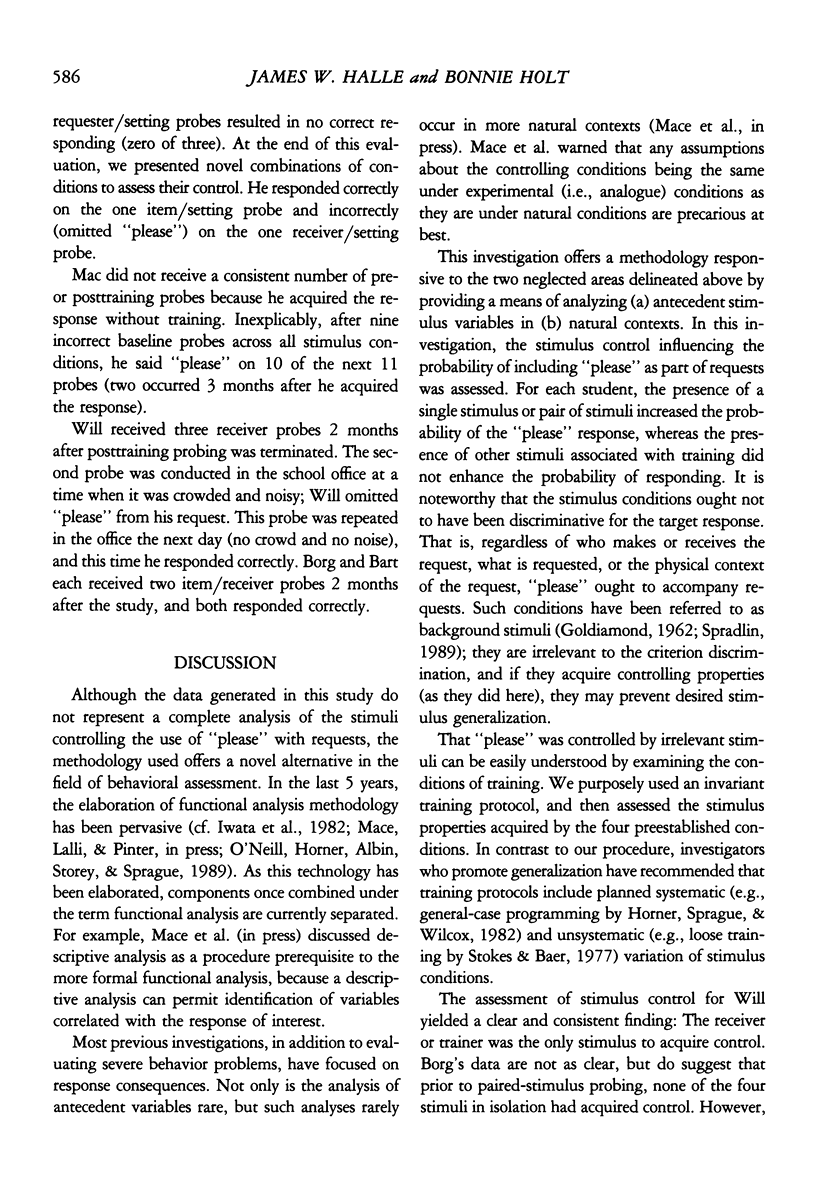
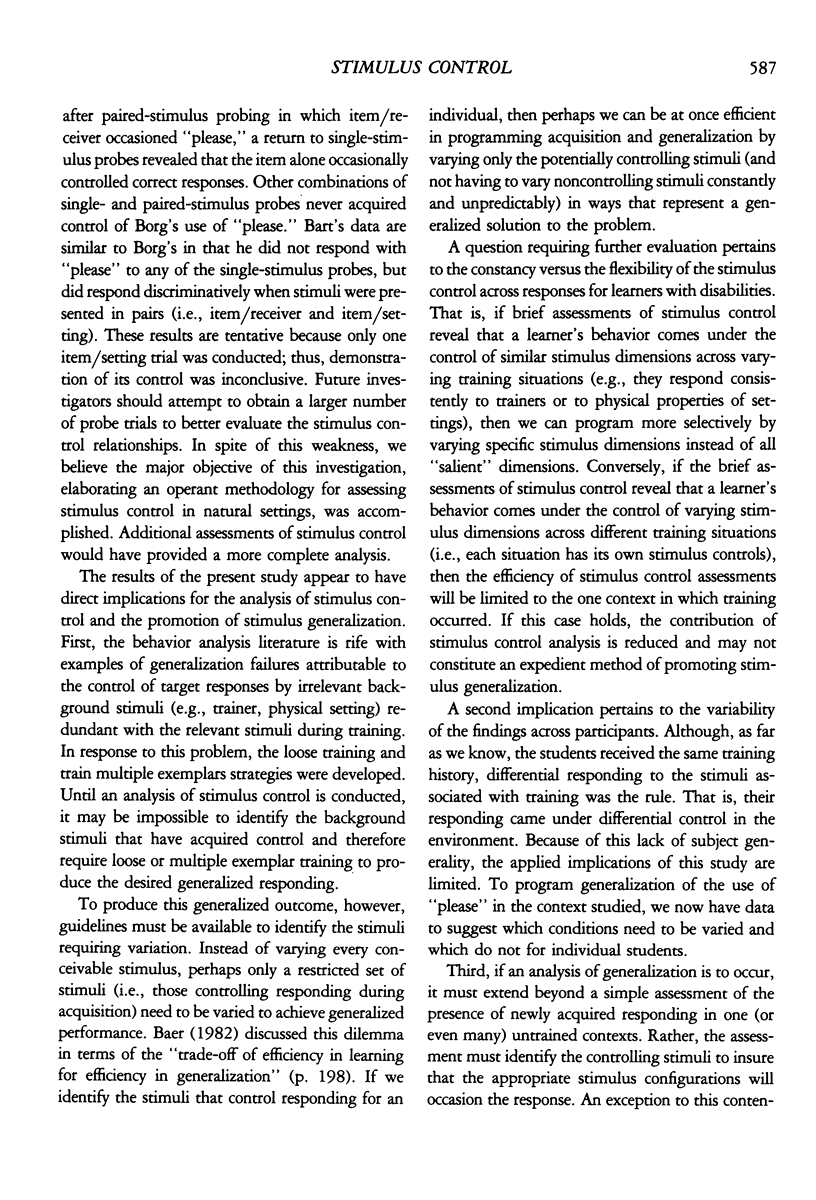
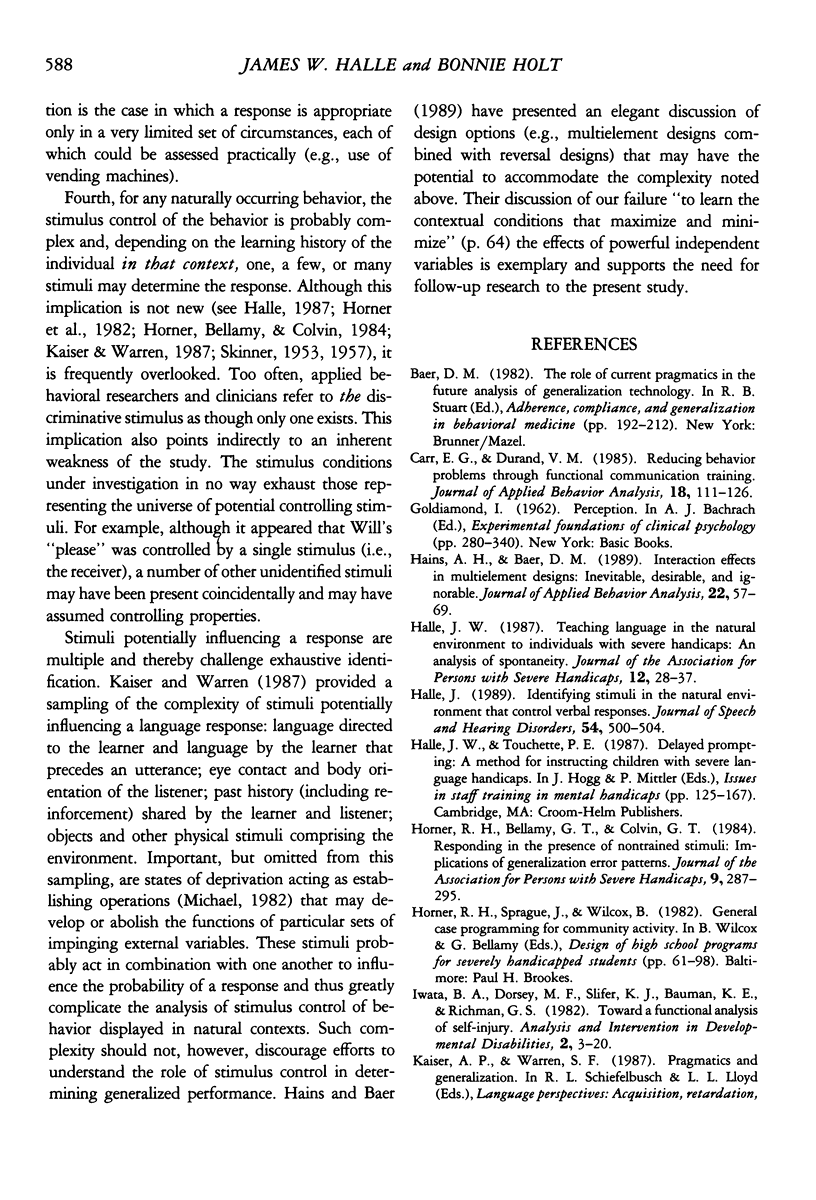
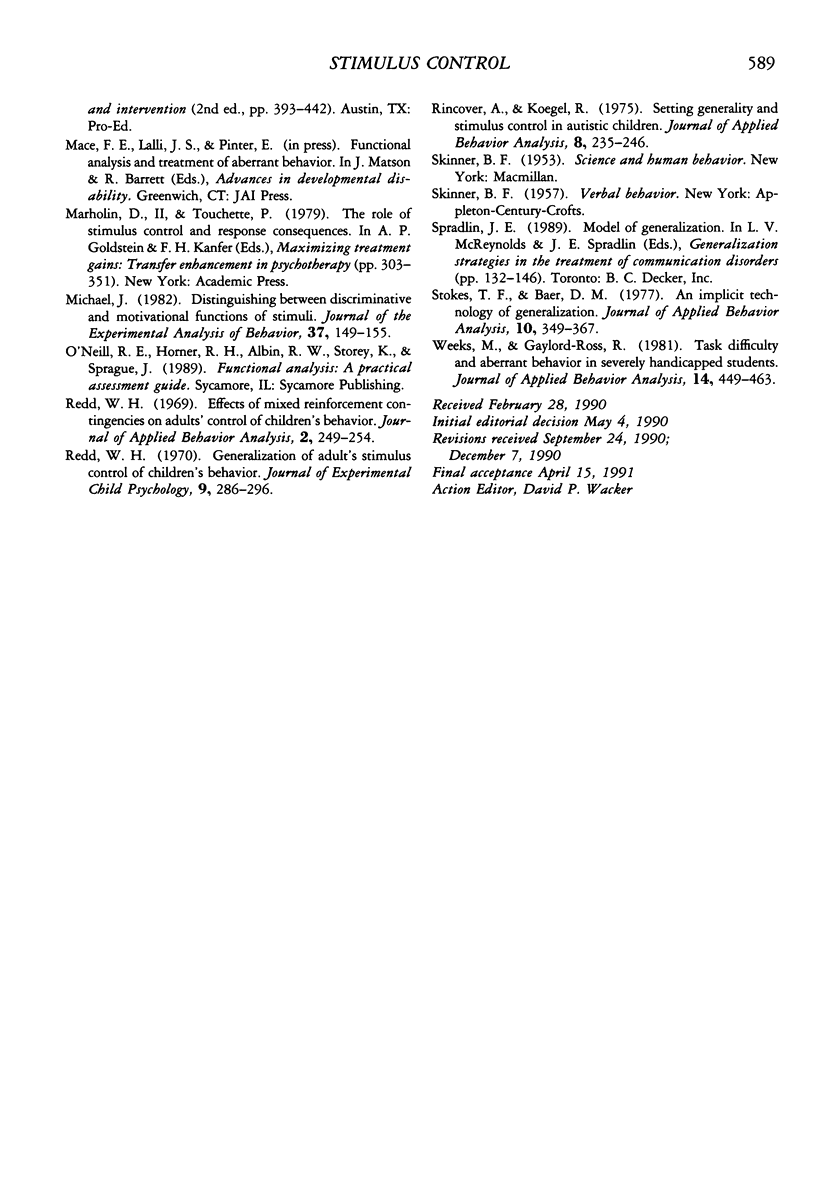
Selected References
These references are in PubMed. This may not be the complete list of references from this article.
- Carr E. G., Durand V. M. Reducing behavior problems through functional communication training. J Appl Behav Anal. 1985 Summer;18(2):111–126. doi: 10.1901/jaba.1985.18-111. [DOI] [PMC free article] [PubMed] [Google Scholar]
- Hains A. H., Baer D. M. Interaction effects in multielement designs: inevitable, desirable, and ignorable. J Appl Behav Anal. 1989 Spring;22(1):57–69. doi: 10.1901/jaba.1989.22-57. [DOI] [PMC free article] [PubMed] [Google Scholar]
- Halle J. W. Identifying stimuli in the natural environment that control verbal responses. J Speech Hear Disord. 1989 Nov;54(4):500–504. doi: 10.1044/jshd.5404.500. [DOI] [PubMed] [Google Scholar]
- Michael J. Distinguishing between discriminative and motivational functions of stimuli. J Exp Anal Behav. 1982 Jan;37(1):149–155. doi: 10.1901/jeab.1982.37-149. [DOI] [PMC free article] [PubMed] [Google Scholar]
- Redd W. H. Effects of mixed reinforcement contingencies on adults' control of children's behavior. J Appl Behav Anal. 1969 Winter;2(4):249–254. doi: 10.1901/jaba.1969.2-249. [DOI] [PMC free article] [PubMed] [Google Scholar]
- Redd W. H. Generalization of adult's stimulus control of children's behavior. J Exp Child Psychol. 1970 Apr;9(2):286–296. doi: 10.1016/0022-0965(70)90093-7. [DOI] [PubMed] [Google Scholar]
- Rincover A., Koegel R. L. Setting generality and stimulus control in autistic children. J Appl Behav Anal. 1975 Fall;8(3):235–246. doi: 10.1901/jaba.1975.8-235. [DOI] [PMC free article] [PubMed] [Google Scholar]
- Stokes T. F., Baer D. M. An implicit technology of generalization. J Appl Behav Anal. 1977 Summer;10(2):349–367. doi: 10.1901/jaba.1977.10-349. [DOI] [PMC free article] [PubMed] [Google Scholar]
- Weeks M., Gaylord-Ross R. Task difficulty and aberrant behavior in severely handicapped students. J Appl Behav Anal. 1981 Winter;14(4):449–463. doi: 10.1901/jaba.1981.14-449. [DOI] [PMC free article] [PubMed] [Google Scholar]


